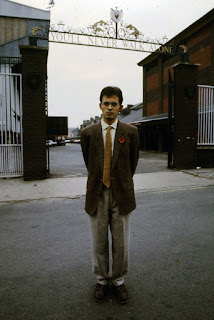ITALIANO (scroll down
for the English text)
ENGLISH
Exaequo was a Geneva company that introduced a few original watch
designs in the late 1980s and early 1990s. The 1991 Basel Fair saw the launch
of the Softwatch, whose name and shape hinted to Salvador Dali and his 1931
painting “The persistence of memory” (see above). In the artist’s words, the three soft
watches he portrayed are “nothing more than the soft, extravagant, solitary,
paranoiac-critical Camembert cheese of space and time... Hard or soft, what
difference does it make! As long as they tell time accurately”. Fitted with a
croco fashioned leather strap and a sapphire crystal, the Exaequo Softwatch was
sold in the specialized shops and department stores of several countries.
Functions Hours, minutes
Size 46 mm x 21 mm, height 8 mm.
Case Goldplated brass, snap-on back.
Movement Quartz.






























